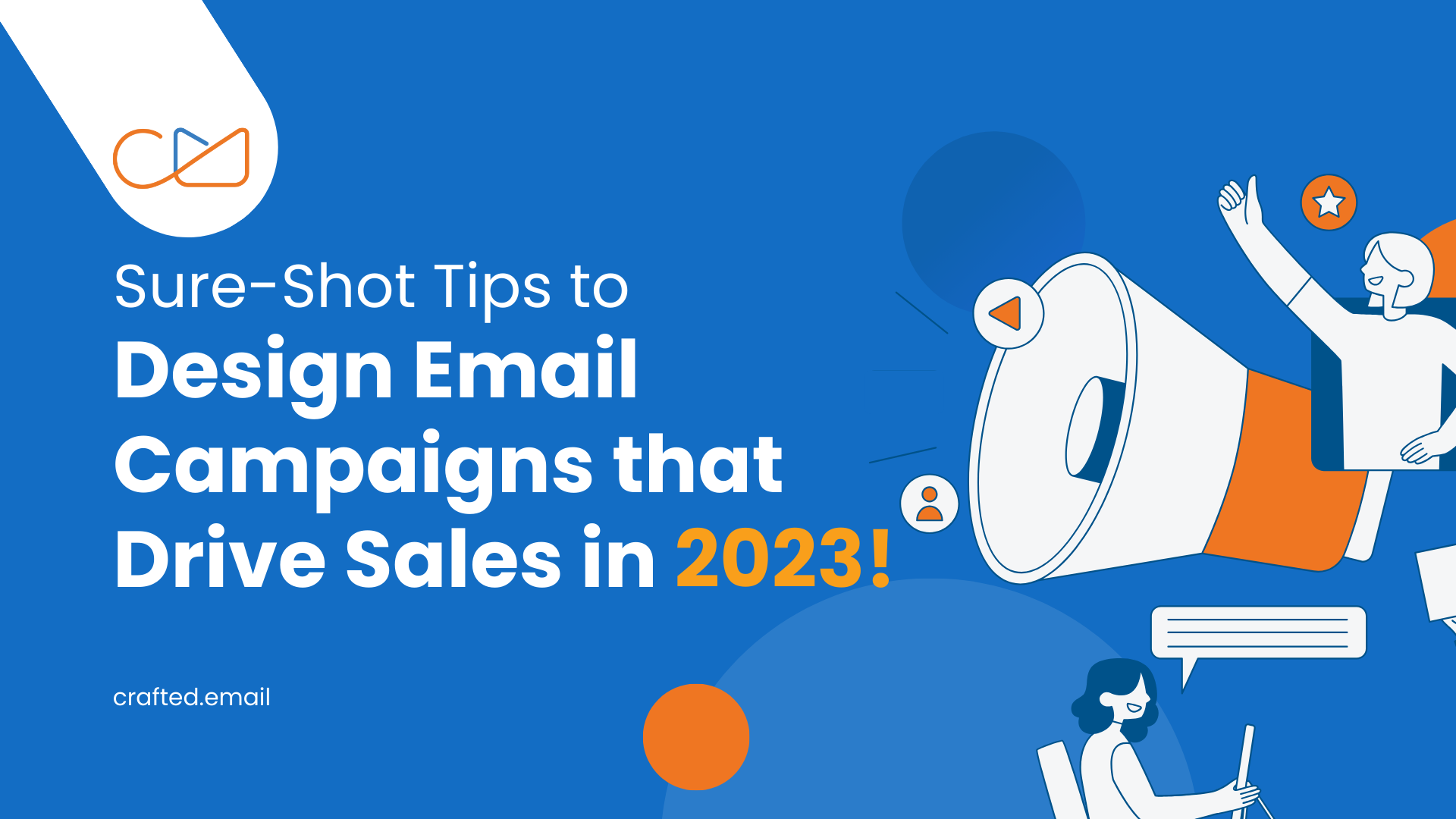Email marketing still wins hands down in digital marketing when it comes to ROI. In fact, it has a median ROI of 122% – that’s four times higher than any other digital marketing strategy. If you implement A/B testing methods, by using a double opt-in process and sticking to a regular email schedule, you can even increase this number.
But with emails competing head-on for attention in people’s inboxes, it’s important to design your email campaigns carefully so that they’re relevant, engaging, and persuasive. Personalized emails are no more a luxury but a necessity. Here are some sure-shot email campaign design tips that drive sales in 2023!
- Segment your email list
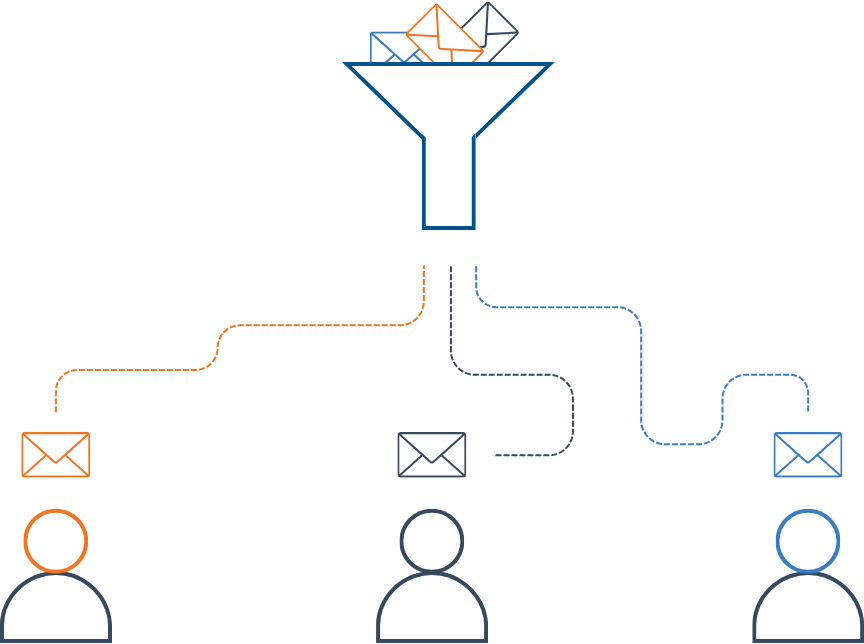
Hubspot declares that email segmentation is one of the most crucial decisions you can make to improve the effectiveness of your email marketing campaigns. It’s one of the most essential digital marketing strategy steps to increase email marketing ROI. When you segment your list, you divide it into smaller groups based on shared characteristics, such as interests, demographics, or purchase history.
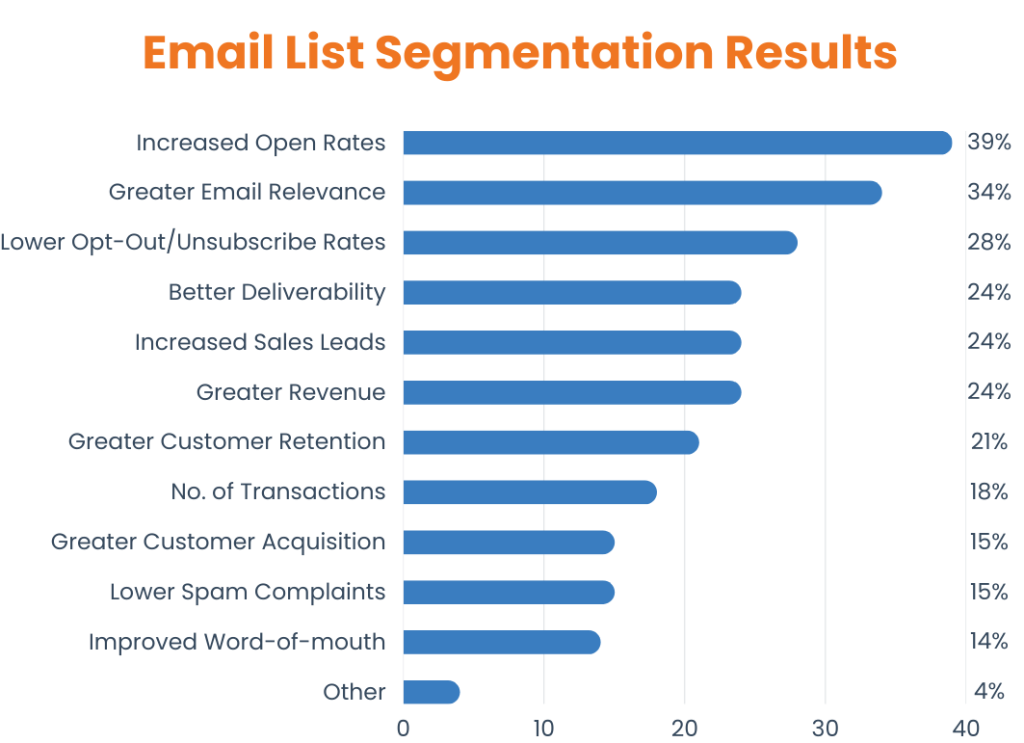
This allows you to send more targeted email content to each group, which can lead to higher open rates, click-through rates (CTR), and conversions.
Wondering how to segment your email list? A good place to start can be like so:
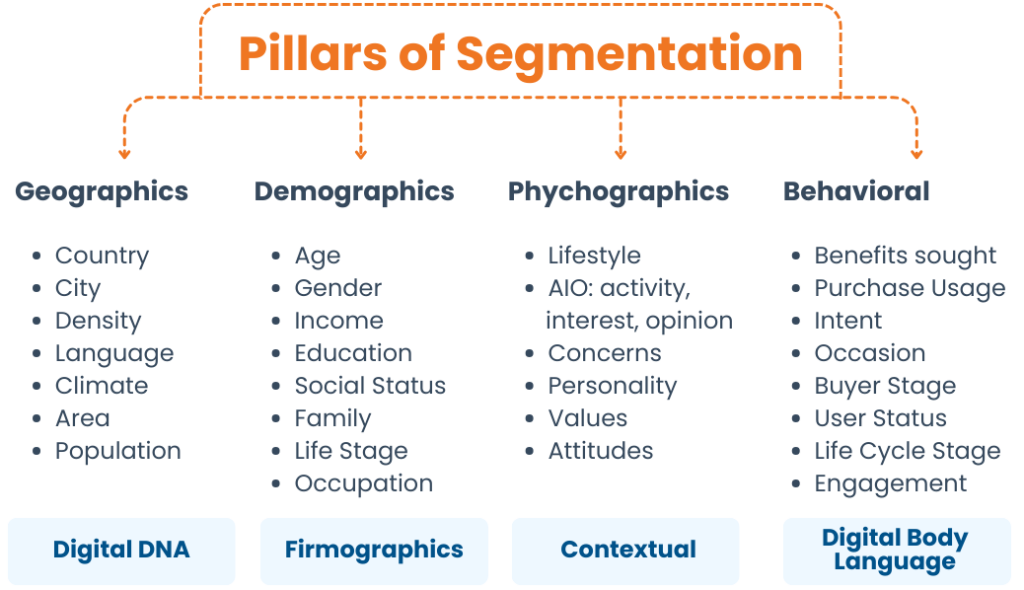
(Image source: Smart Insights)
- Personalize your emails
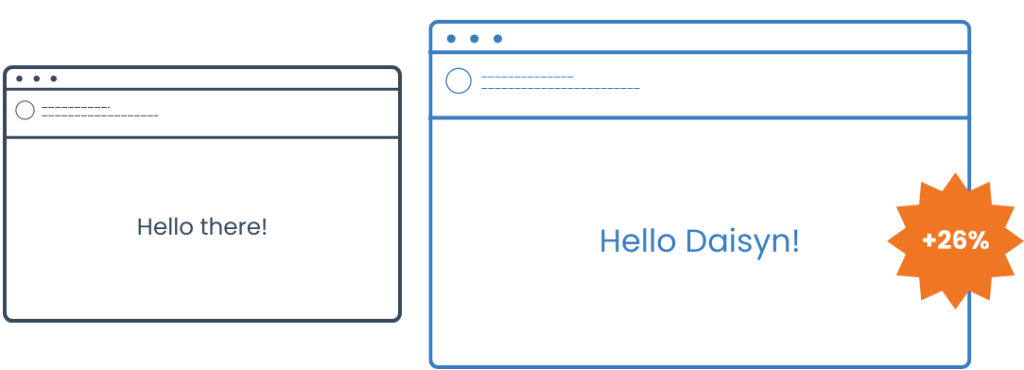
Email personalization techniques are another key element of effective email marketing. When you personalize your emails, you show your subscribers that you care about them and that you’re not just sending out generic messages.
There are many ways to personalize your emails, such as:
- Using the subscriber’s name (subscriber name insertion)
- Mentioning their past purchases (past purchase references)
- Product recommendations in emails based on their interests
Tip: Personalize your cross-selling emails!
Once a customer has made a purchase, or even if they’ve abandoned their cart, don’t give up on them just yet. Cross-selling strategies for emails can be a great way to bring them back to your store and convert them into paying customers again.
Cross-selling emails are a type of email marketing that promotes complementary products or services to customers who have already expressed interest in something similar. For example, if a customer buys a new pair of shoes from your store, you could send them a cross-selling email recommending socks, shoe laces, or a shoe care kit. Cross-selling emails can be very effective at driving sales because they are highly targeted and relevant to the customer’s interests.
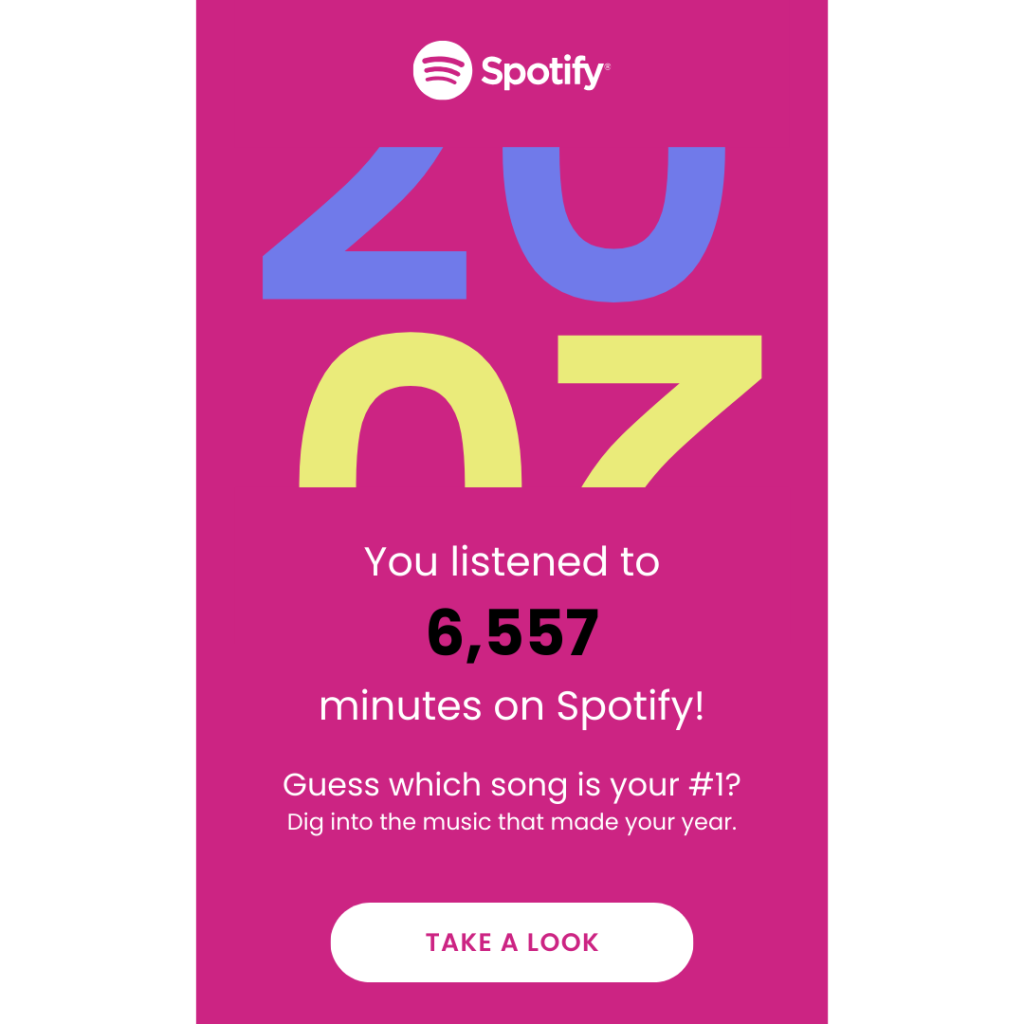
Here are a few tips for writing effective cross-selling emails:
- Create a series of cross-sell emails with different copies and products: This will help you reach your customers at different stages of their buying journey and offer them relevant products.
- Suggest products: Based on what the shopper is currently browsing, has in their carts, or has already purchased. This shows that you’re paying attention to their needs and that you’re interested in helping them find the best products for their needs.
- Highlight the main product and then recommend two or more add-ons: This is a simple but effective way to increase the average order value (AOV).
- Keep your emails short and to the point
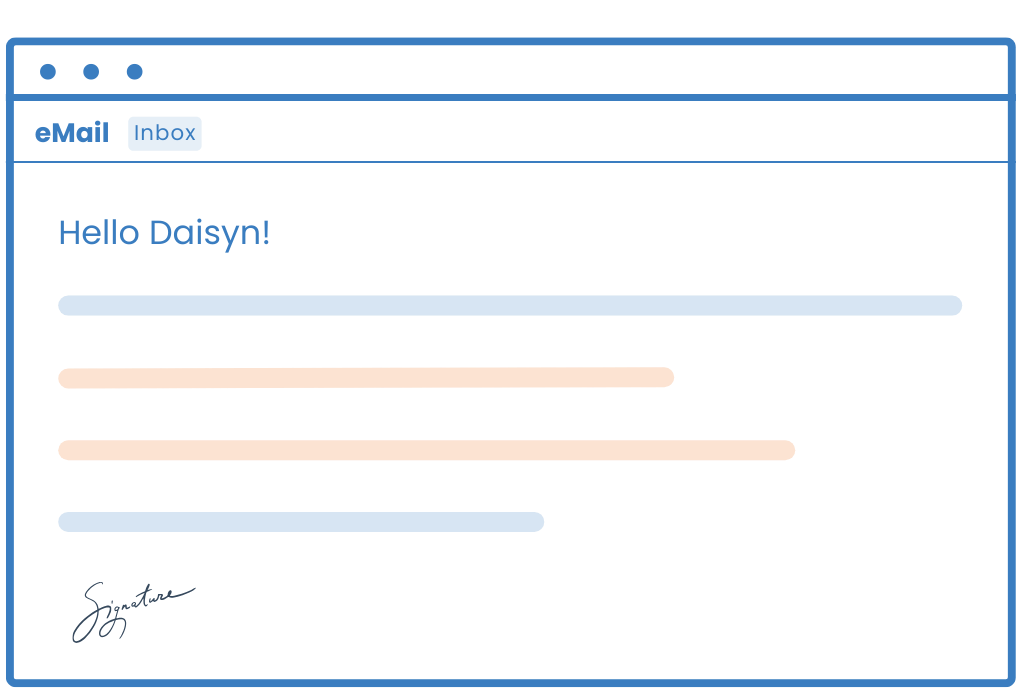
Email readability tips can also help get your campaigns that much-needed leverage. The KISS (Keep it short and simple) principle is the backbone of effective email marketing. People are busy and they don’t have time to read long, rambling emails.
- Get to the point quickly: State the purpose of your email in the first sentence or two.
- Use clear and concise language: Avoid using jargon or technical terms that your readers may not understand.
- Break up your text into short paragraphs and bullet points: This will make your email easier to read and scannable.
- Proofread your email carefully before sending it: Make sure there are no errors in grammar or spelling.
You can also use one of the following email content frameworks (PAS, FAB, AIDA, 4Ps) to keep your email content on point:
- PAS (Problem, Agitate, Solution)
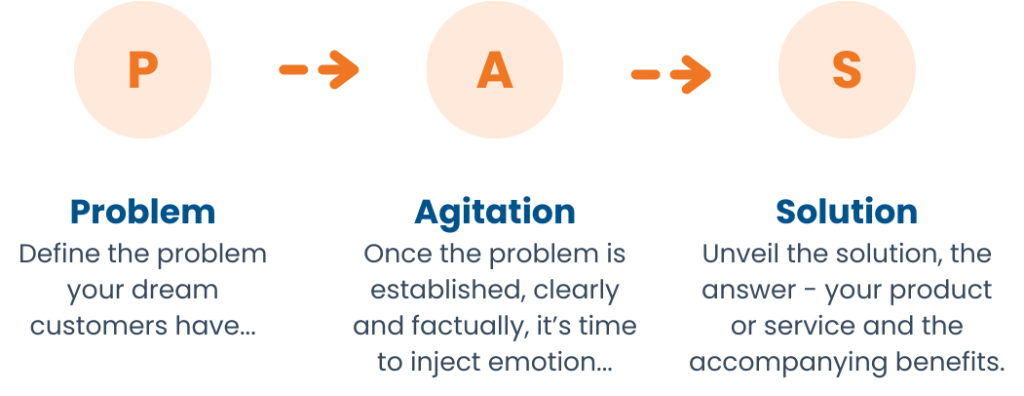
(Source: Copywriting Formulas)
Identify a problem that your readers have, agitate them by making the problem seem worse than it is, and then offer your solution as the only way to fix it.
- FAB (Features, Advantages, Benefits)
List the features of your product or service, then explain the advantages those features offer, and finally describe the benefits that your readers will experience by using your product or service.
- AIDA (Attention, Interest, Desire, Action)
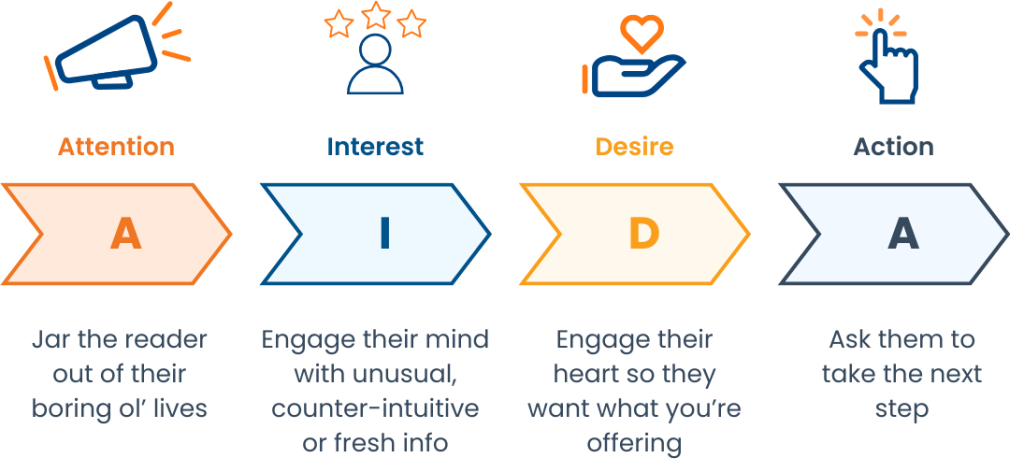
(Source: Copywriting Formulas)
Grab your readers’ attention with a strong headline, pique their interest with a compelling introduction, create a desire for your product or service by highlighting its benefits, and then tell your readers what you want them to do next.
- 4Ps (Picture, Promise, Prove, Push)
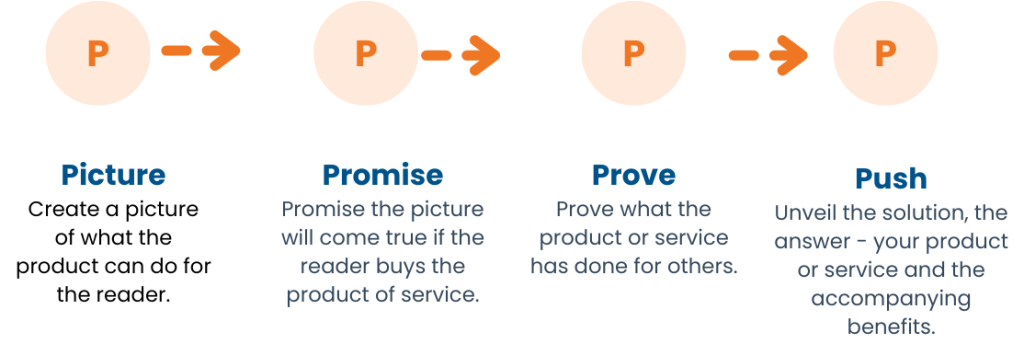
(Source: Copywriting Formulas)
Use a relevant image or video to grab your readers’ attention, make a promise to them, prove that you can deliver on your promise, and then push them to take action, such as visiting your website or signing up for your newsletter.
- AI-powered email marketing
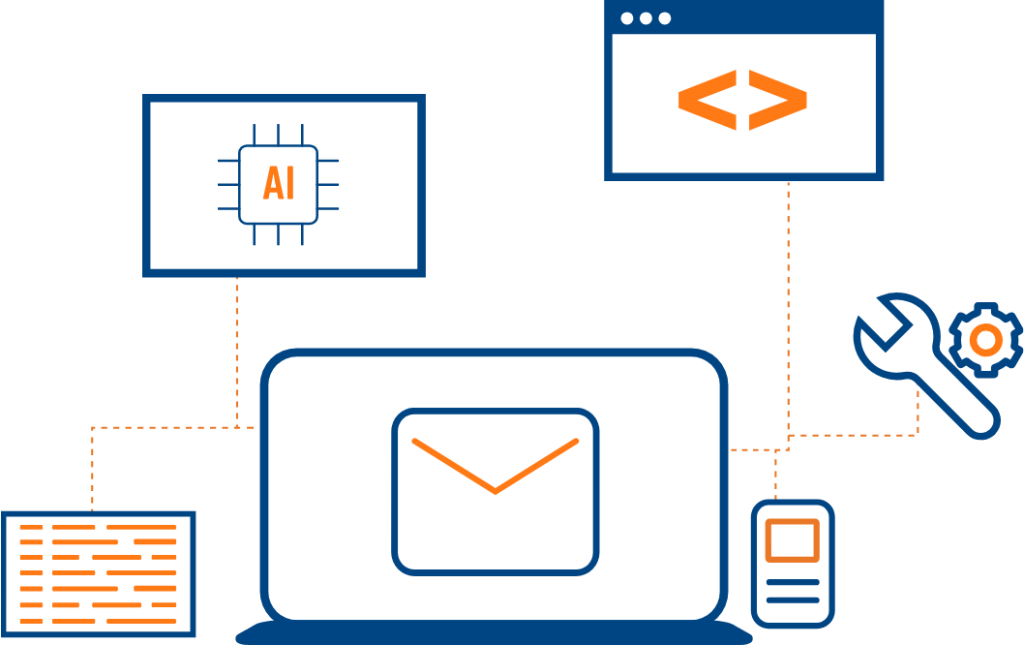
AI in email marketing works wonders! Segment your audience. AI-powered segmentation can help you segment your audience based on their interests, demographics, and purchase history. This allows you to send more targeted emails that are more likely to be opened and clicked on.
AI can also personalize the recipient’s name, mention their past purchases, and recommend products they might be interested in. It even helps optimize your send times. AI can help you determine the best time to send your emails based on your recipients’ open and click rates.
- Write effective subject lines
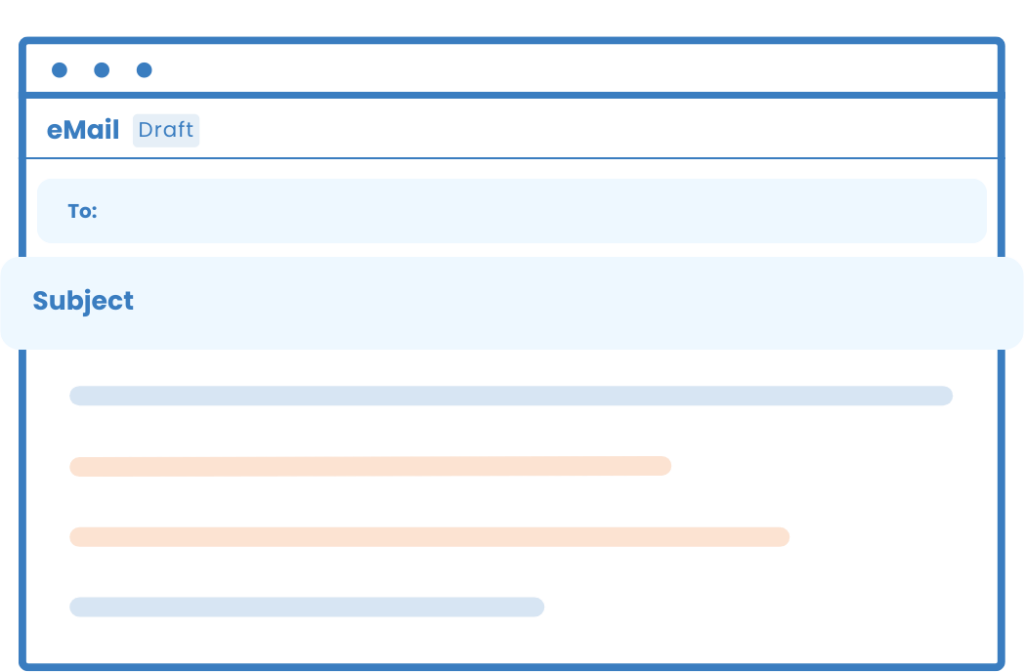
Make a good impression with your subject line. Here are a few subject line best practices: A good subject line should be clear, concise, and relevant to the content of your email. It should also be attention-grabbing and make your subscribers want to open your email.
- Avoid using spammy words and phrases.
- Email service providers (ESPs) have spam filters that flag certain words and phrases as spam.
- If your subject line contains spammy words or phrases, your email is more likely to be sent to the spam folder, where it’s unlikely to be seen by your subscribers.
- Avoid using all caps, excessive punctuation, or excessive exclamation points.
- Avoid using spammy words and phrases such as “free,” “winner,” “guarantee,” and “limited-time offer.”
- Be honest and accurate in your subject line.
- Use keywords that your subscribers are likely to be interested in.
- Ask a question or make a bold statement.
- Use personalized subject lines so that they are more relevant to each subscriber.
- Use a call to action
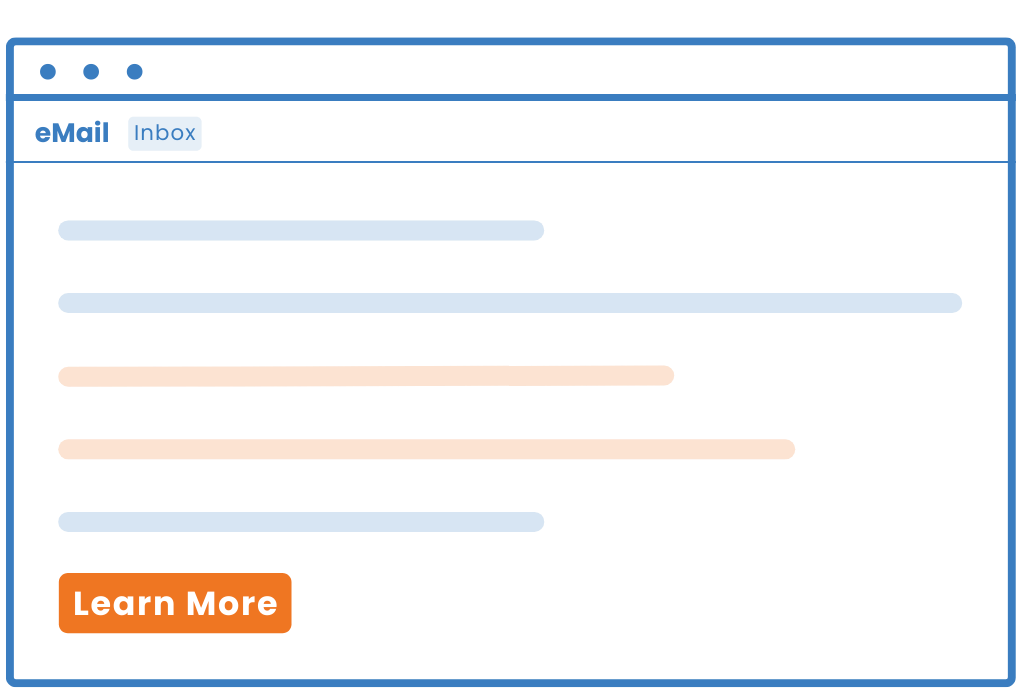
Tell your subscribers what you want them to do after reading your email. This could be visiting your website, signing up for a free trial, or making a purchase.
Your email call to action should be clear, concise, and actionable. Use strong verbs and make your call to action stand out from the rest of your email.
Additional tips for 2023:
- Use interactive email elements. This could include things like email surveys and polls, or quizzes. Interactive emails are more engaging and can help to increase click-through rates and conversions.
- Optimize your emails for mobile. More and more people are checking their email on their smartphones and tablets. So smartphone email optimization is a must. Make sure you have mobile-friendly emails. Your emails should look good and be easy to read on mobile devices.
- Use artificial intelligence (AI) to personalize your emails. AI-driven personalization can be used to segment your email list, personalize your email content, and even predict which emails are most likely to be opened and clicked on.
By following these tips, you can design email campaigns that drive sales in 2023 and beyond.
